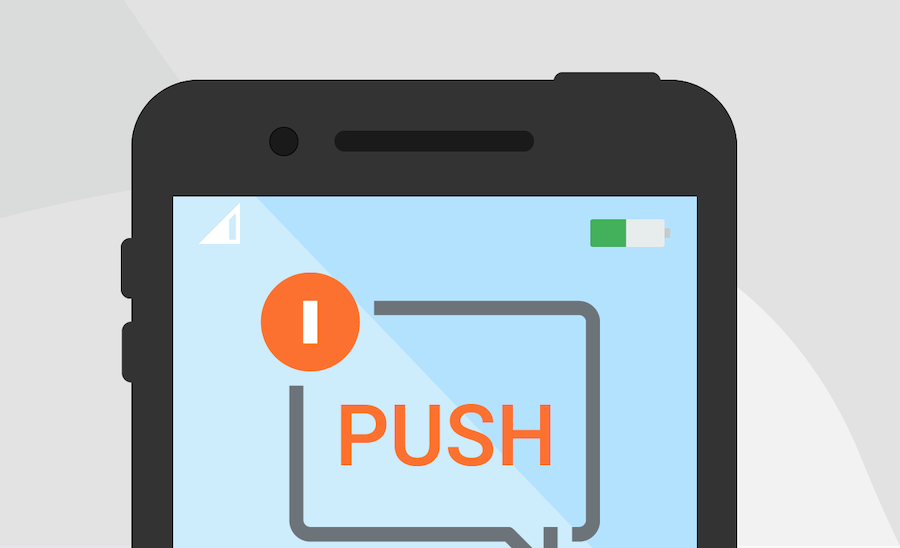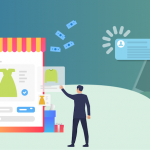How your business can benefit from personalized push notifications and ads

Notifications as an ad format are inextricably linked to the future of digital advertising, combining the benefits of display banners, email and SMS marketing.
Virtually all large online players leverage push notifications to connect with and monetize their audiences. Facebook, for example, has a simple but remarkably effective notification strategy. When a group or page publishes an update, followers receive a push notification. If someone posts or comments on a user’s post, they’re also notified. This means that Facebook’s entire user base is always aware of important events and news without the need to log in.
Along with mobile push notifications, website push notifications also keep people informed and up-to-date. Website push notifications are clickable messages sent by a website to their subscribers’ browsers. They work in a similar way to mobile app push notifications but the key difference is that they are delivered from websites instead of apps and can be accessed on all devices.
So how can your business benefit from push notifications and recent innovations in the area? And how is the emerging field of push ads affecting the way brands connect with new customers?
An Overview of Push Notification Platforms
Three types of platforms help companies manage their push notification strategy. Here’s a quick overview:
- Entry-level web apps – These provide a basic toolkit for sending push notifications.
- Sophisticated management tools – Higher-level management solutions build on the feature-kit offered by entry-level apps and usually include in-depth analytics, AI-driven personalization, and segmentation.
- Monetization platforms – Advertising networks enable brands to reach new audiences via push notifications from third-party apps and sites.
It’s important to understand the differences between different management apps so you can pick the one that’s best suited to your needs. A company that needs the full functionality of an AI-driven and advertising solution, for example, should avoid entry-level apps (and vice-versa).
Let’s take a look at each one in more detail.
Entry-Level Web Apps
There are many solutions that enable companies to send push notifications. They are similar to apps like Mailchimp or SendGrid, which distribute email updates or newsletters. These companies offer a simplified way to get started, even if the levels of granularity when it comes to segmenting and targeting users are not the most sophisticated.
Enterprise Management Tools
Enterprise tools are platforms with a more sophisticated and personalized approach. Their software often relies on AI and machine learning to make sure users deliver the right notification to the right people at the right time.
Companies such as Jeeng and Pushnami help publishers and content creators target their visitors with push notifications that are relevant to the content they’re interested in. If a reader likes the sports section of a media site, for example, the push messages will reflect this.
Other marketing platforms are also focused on crafting personalized messages to help B2C & B2B companies drive more revenue from their existing customers and anonymous users.
Monetization and Ad Platforms
Ad platforms are a relatively new addition to the push notifications space. And there are lots of untapped opportunities for brands and businesses.
These platforms allow companies to leverage push notifications as a monetization channel to target the right customers with the right products.
In terms of push notifications, companies like AdMaven leverage Microsoft Edge Notifications to help businesses rethink push channels as both a monetization and engagement platform. In the future, companies will rely on increasingly sophisticated targeting and distribution platforms that are able to combine the personalization of both content and advertising to enhance the user experience.
Leveraging Desktop Browser Notifications
Imagine a customer that receives a push notification about a new match on a dating app. The app lets him know about new matches on their mobile phone – along with updates about events and even cross-promotions of romantic products like romantic restaurants and weekend trips – but not necessarily when the user is browsing on a desktop computer.
While mobile app push notifications are very popular across mobile devices and tablets, web notifications have the potential to play a crucial role in the desktop browsing experience.
After all, desktop usage still accounts for 42% of total internet time, and web push notifications bring advertisers, publishers, and marketers the ability to leverage real-time push notifications with hundreds of millions of internet users every day.
Segmentation and Relevancy
User segmentation and relevancy are crucial for making push messages work. Consequently, the space is seeing greater adoption of segmentation and personalization practices.
Many companies, for example, now ask additional questions about users’ interests during the opt-in process. It’s also common practice for data-crunchers to segment users into different ‘buckets’ based on the sections or pages of a site they’re interacting with the most. If a frequent user of a big media site is mostly interested in sports news and technology, they won’t receive alerts about fashion.
Personalization is particularly important when it comes to paid ads, where the risks of disengagement are quite high, and the push economy is experiencing a transformation similar to the one experienced by email marketing over the past decade.
There’s a new advertising economy around push messages which will expand this channel beyond alerts and reminders, providing advertisers and publishers with monetization platforms which can be highly personalized and impactful – targeting users with what they want, at the right time, on the right platform.
A Promising Outlook
Although push notifications are a common part of everyday life, the technology, along with its scope for use, is still developing.
Push notifications open up new opportunities, not only in terms of engaging with existing customers but also by providing a means of connecting with new audiences. Brands that are willing to invest the time and resources to develop these strategies now, while the tech is still relatively new, will benefit for years to come.
___
by Tal Melenboim
source: B2C

